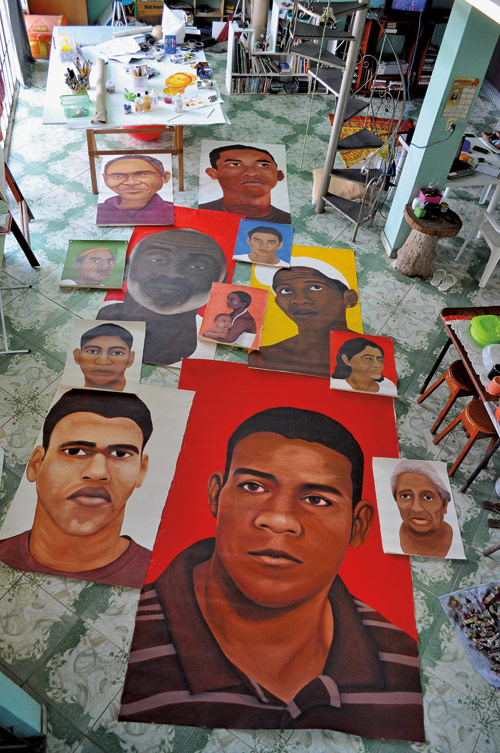2014
Éder Oliveira
As is his usual practice in the city where he resides – Belém, Pará – Éder Oliveira has created large-scale mural portrait paintings for the 31st Bienal. These portraits might be called monumental, if we use the term ‘monument’ to refer to something other than hegemonic events and characters in history. The artist makes monuments precisely out of those whom the social dynamic stigmatises: people suspected to be involved in crime and those whose images are plastered across the sensationalist pages in the police section of Pará newspapers. Transposed onto Belém’s walls, and now those of São Paulo, these characters become widely visible, though still anonymous. Regardless of the details of their identities and the location where they were originally photographed – information which Oliveira omits – the murals elicit a reflection on the way civil rights are ignored, most evidently here in the realm of photojournalistic coverage.
Ordinarily referred to as thugs or criminals by the press – often before they are convicted, if they are – most of the people portrayed here are caboclos: mixed-race descendents of African and Native Brazilians. This demographic fact denotes, in addition to the ethical problems of police coverage, the racism of the media when reporting on issues of violence and public safety in Brazil.

Now relocated to the Ciccillo Matarazzo Pavilion, at an upscale address in São Paulo, Éder Oliveira’s portraiture takes on new aspects. In this cosmopolitan, though extremely excluding metropolis, the caboclo from Pará personifies ‘the other’: he or she who does not fit with the dominant socioeconomic standards and, as such, lives on the geographic and civic margins of society, as do northeastern Brazilians, Haitians, Bolivians and so many others in São Paulo. Indirectly, the artist’s murals become centres where the attention of the public at the 31st Bienal might converge. – AMM